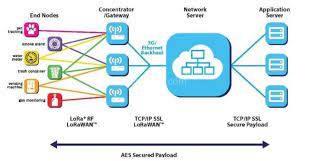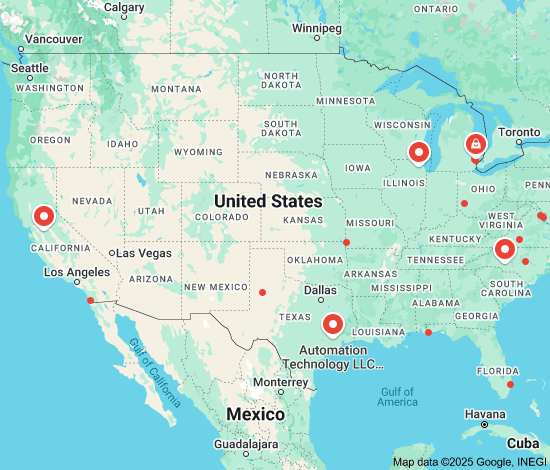
Unlocking Connectivity: Exploring the Potential of LoRa Networks
The Power of LoRa Networks in Modern Connectivity
LoRa (Long Range) networks have emerged as a revolutionary technology in the realm of wireless communication, offering long-range, low-power connectivity for a wide range of applications. This innovative technology has the potential to transform industries and enable new possibilities for the Internet of Things (IoT).
One of the key advantages of LoRa networks is their ability to provide long-range communication at low power consumption levels. This makes them ideal for applications that require connectivity over vast distances, such as smart agriculture, asset tracking, and smart city infrastructure.
LoRa networks operate on unlicensed radio frequencies, allowing for easy deployment and scalability. This flexibility has led to the rapid adoption of LoRa technology in various sectors, including utilities, logistics, and environmental monitoring.
With its robust and reliable communication capabilities, LoRa networks are well-suited for connecting devices in remote or challenging environments where traditional cellular or Wi-Fi networks may not be feasible. This makes them an attractive option for IoT deployments that require long battery life and extended range.
In addition to its technical advantages, LoRa technology offers cost-effective solutions for businesses looking to implement IoT applications on a large scale. The ability to connect thousands of devices over long distances with minimal infrastructure requirements makes LoRa networks an appealing choice for companies seeking efficient connectivity solutions.
As the demand for IoT connectivity continues to grow, the role of LoRa networks is becoming increasingly significant in shaping the future of wireless communication. With its unique combination of long-range coverage, low power consumption, and cost-effectiveness, LoRa technology is poised to drive innovation across industries and unlock new possibilities in the digital landscape.
Top 5 Frequently Asked Questions About LoRa Networks
- What is LoRa in networking?
- Is LoRa a cellular network?
- What does LoRa stand for?
- Is LoRaWAN free?
- How does the LoRa work?
What is LoRa in networking?
LoRa, short for Long Range, is a type of wireless communication technology that enables long-distance connectivity with low power consumption. In networking, LoRa refers to a protocol that allows devices to transmit data over long ranges using radio frequencies. This technology is particularly well-suited for Internet of Things (IoT) applications where devices need to communicate over extended distances while conserving energy. LoRa networks are known for their reliability and scalability, making them an increasingly popular choice for various industries seeking efficient and cost-effective connectivity solutions.
Is LoRa a cellular network?
The question “Is LoRa a cellular network?” is a common one when discussing LoRa technology. It is important to clarify that LoRa is not a cellular network but rather a type of wireless communication technology that operates on unlicensed radio frequencies. Unlike traditional cellular networks that rely on infrastructure provided by mobile carriers, LoRa networks are designed for long-range, low-power connectivity for Internet of Things (IoT) applications. While both cellular and LoRa networks serve the purpose of enabling wireless communication, they differ in terms of coverage, power consumption, and infrastructure requirements. Understanding this distinction is crucial in determining the most suitable connectivity solution for specific IoT use cases.
What does LoRa stand for?
LoRa stands for Long Range. It is a wireless communication technology that enables long-range connectivity with low power consumption, making it ideal for various IoT applications. LoRa networks operate on unlicensed radio frequencies and offer robust communication capabilities over extended distances, providing a cost-effective solution for businesses looking to deploy IoT devices in remote or challenging environments. The acronym “LoRa” encapsulates the technology’s core feature of providing long-range connectivity, which is essential for enabling efficient and reliable communication between IoT devices.
Is LoRaWAN free?
The question of whether LoRaWAN is free is a common one in discussions about LoRa networks. While the LoRa technology itself is open and available for use, the deployment and operation of a LoRaWAN network may involve costs. Setting up a private LoRaWAN network requires investments in infrastructure, such as gateways and sensors, as well as ongoing maintenance and management expenses. However, there are public LoRaWAN networks operated by various organizations that offer free or low-cost access to users for certain applications. Ultimately, the cost of using LoRaWAN depends on the specific deployment scenario and service provider involved.
How does the LoRa work?
LoRa, short for Long Range, operates on a spread spectrum modulation technique called Chirp Spread Spectrum (CSS). In LoRa networks, devices transmit data over long distances by modulating radio waves at different frequencies within a specific frequency band. This modulation technique allows LoRa devices to achieve remarkable range and penetration capabilities while consuming minimal power. The network architecture typically consists of end devices, gateways, and a network server. End devices use LoRa modulation to send data packets to nearby gateways, which then forward the information to the network server for processing and analysis. This efficient communication protocol enables reliable long-range connectivity for various IoT applications across diverse industries.


Good day! I coould have swoprn I’ve visited thbis websitfe befote buut after
lookinhg att a feew of thhe articlles I realized it’s new to me.
Regardless, I’m definitely pleased I found it and I’ll bee
bookmarking it aand checking back often!
Thank you for your kind words! We’re glad you found our blogarticle on LoRa networks insightful. Feel free to bookmark the page and visit us again for more informative content on this revolutionary technology. We appreciate your support and look forward to sharing more valuable insights with you in the future.